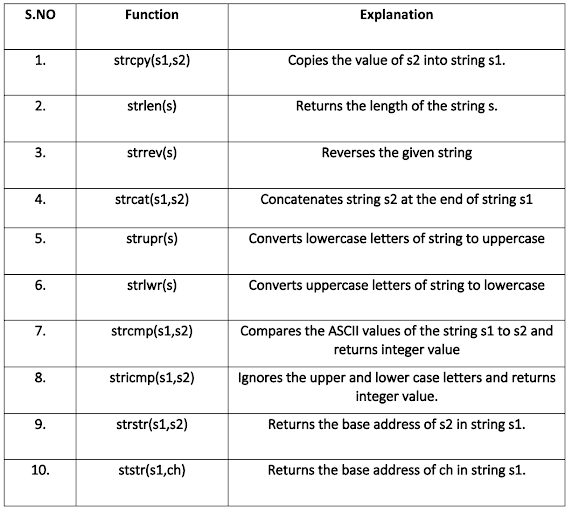The most powerful and popular topic that is in discussion everywhere is Artificial Intelligence (AI). This post will give you an idea about what AI is and its key workloads, which are important for completing a Microsoft certification on Azure AI fundamentals ai-900 exam.
Reference: Microsoft official Page AI Fundamentals- Fundamentals of AI concept
Introduction
What is an AI?
An AI is software that imitates the behavior of humans and its capabilities.
It is mainly designed to improve various areas such as health care, overcome physical disadvantages, provide smart infrastructure, and greater entertainment experiences for the customers, and save our planet, etc.

Credits Freepik
The key workloads include the following:
| 1. | Machine Learning | The way to train data, make predictions, and arrive at the solution |
| 2. | Computer Vision | The capability to interpret the world visually |
| 3. | Natural Language Processing (NLP) | The capability to interpret written and spoken language and respond accordingly |
| 4 | Knowledge Mining | The ability to extract information from huge data and create searchable storage content |
| 5. | Document Intelligence | It is the ability to manage, process, and use data found in forms and documents |
| 6. | Generative AI | To create content in various formats such as images, code, natural language, etc. |
Machine Learning
Machine Learning is the foundation for AI solutions and it combines Mathematics with Computer Science. An important example is an agricultural technology company called Yield which uses sensors, data, and ML to help farmers based on weather conditions.
Working of ML:
A huge volume of data is generated everyday through text messages, emails, social media posts, etc. The Data Scientists use huge data and train the models which helps to make predictions and inferences based on relationships in data.
Let us understand the working of ML with an example
- The Botanists and Scientists collect data on wildflower samples.
- Label the data with the correct species.
- Finds the relationship between the labeled data using an algorithm and encapsulates it in a model.
- With the gained knowledge it is easy to identify the correct species.

Machine Learning in Microsoft Azure
Microsoft Azure provides Azure ML service, a cloud-based platform used mainly for creating, managing, and publishing machine learning ML models.
Azure Machine Learning ML Studio offers the following
Automated ML allows non-experts to create effective ML models from data.
Automated ML Designer, a graphical interface for creating no-code solutions.
Data Metric Visualization analyze and optimize experiments with visualizations.
Notebooks write and run code in Jupyter Notebooks integrated into the studio.
Computer Vision
An area of AI that mainly deals with Visual Processing. The best example of this is the Seeing App mainly designed for Blind and low-vision people. It helps them by describing the people, text, and nearby objects.
Computer Vision Models and Capabilities:
| Task | Capabilities |
| Image Classification | Classify images based on their contents. For example in traffic monitoring systems to identify different vehicles such as cars, buses, etc. |
| Object Detection | Classify individual objects and identify their location with a bounding box. For example in traffic monitoring identify different vehicle classes. |
| Semantic segmentation | Individual pixel images are classified according to the object. For example, images are overlayed with masks to highlight using different colors. |
| Image analysis | Technique to extract information from images including tags. |
| Face detection, analysis, and recognition | Helps to locate individual faces in images, recognize individual and facial features |
| Optical Character Recognition | Face detection, analysis, and recognition |
Computer Vision services available in Microsoft Azure
The Azure Vision Studio provides the necessary services to create vision solutions and use and test the application. It includes
- image analysis
- Optical Character Recognition OCR


- Face detection

Natural Language Processing
Natural Language Processing mainly focuses on creating software that understands written and spoken language. It provides a way to
- analyze and interpret text,
- interpret spoken language and respond,
- translates between the languages,
- interpret commands and determine appropriate action

by freepik
An important example is Starship Commander a virtual reality game that uses NLP to control narrative and interact with characters.
NLP in Microsoft Azure
Microsoft Azure’s AI Language: Its feature involves understanding and analyzing text, training models that understand spoken commands, and building solutions using AI Language Studio. We can explore its features in AI-Language Studio.
Microsoft Azure’s AI Service: Its features include speech recognition, real-time translation, conversation transcription, etc available for use and testing in AI Speech Studio
Document Intelligence & Knowledge Mining
Azure AI Document Intelligence is mainly used to build solutions that manage data from scanned documents. Features of Document Intelligence are
- Automate processing
- enhance data-driven strategies and
- improve search capability

By Freepik
A prebuilt model includes document intelligence capabilities tax forms, receipts, etc, and a custom model with its own dataset. The custom models are available in Document Intelligence Studio for testing and use.
Knowledge Mining:
It handles large volumes of data from unstructured text to create a searchable knowledge store. Azure AI Speech has tools for building indexes that enable searchable content.
Azure AI Search utilizes the capabilities of AI services such as
- image processing
- document intelligence and
- natural language processing (NLP) to extract data, and provide useful insights.
Generative AI
The generative AI takes natural language as the input and generates responses in various formats such as audio, code, image, and natural language.

Azure Open AI Service is used to build generative AI solutions. It includes openAI cutting-edge models and the APIs of the cloud platform. The service features for use and testing are available in Azure openAI Studio and its user interface helps to develop, manage, and customize generative models.
Risk Factors & Challenges
Some of the risks and challenges in using AI tool
- Biased result -for example, the loan approval model discriminates based on gender due to bias in the data with which we train the model.
- Harmful errors – System failure and collision in autonomous vehicles.
- Expose data -The medical data used for training bots are stored insecurely
- Solutions are not for everyone- for example, no audio output for the visually impaired.
- Trust complex system- Investment recommendation by finance AI tools.
- AI-driven decision -Convicting an innocent based on facial recognition.
Responsible AI
The six principles guide AI-based software development to ensure better solutions without negative consequences.
Fairness
AI must treat everyone fairly without any bias. For example, a model created for the loan approval system must not approve or deny due to bias based on gender, ethnicity, etc.
Azure AI model has the ability to interpret and quantify the extent to which data influences prediction. This capability is helpful for scientists and developers to mitigate bias.
Responsible AI with Face service retires facial recognition that can infer emotional state and identify an attribute. This feature when misused can subject the public to discrimination and denial of service.
Reliability and Safety
An AI-based software system such as vehicles and medical diagnosis systems can cause substantial risk to human life.
The System needs rigorous testing and deployment processes to ensure proper working before the release.
Privacy and Security
ML-based AI systems are trained using huge data, which may include personal information, so it must be secure and private.
Inclusiveness
AI should benefit all parts of society regardless of physical ability, gender, sexual orientation, ethnicity, etc.
Transparency
Users must be made aware of the purpose, how it works, and the limitations of AI systems.
Accountability
The designers and developers of AI systems must work under governance and principles that must meet ethical and legal standards.

